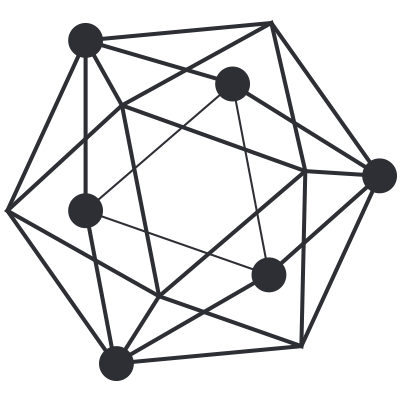Introduction to Hyperledger: A Blockchain Technologies for Business
Hyperledger is not a blockchain, but it is a project that was initiated by Linux foundation in December 2015 to advance blockchain technology. This project is a collaborative effort by its members to build an open source distributed ledger framework that can be used to develop and implement cross-industry blockchain applications and systems.
The key focus is to build and run platforms that support global business transactions. The project also focuses on improving the reliability and performance of blockchain systems.

Projects under Hyperledger undergo various stages of development, starting from proposal to incubation and graduating to an active state. Projects can also be deprecated or in End of Life state where they are no longer actively developed.
In order for a project to be able to move into incubation stage, it must have a fully working code base along with an active community of developers.
Currently, there are six projects under the Hyperledger umbrella: Fabric, Iroha, Sawtooth lake, blockchain explorer, Fabric chaintool, and Fabric SDK Py. Corda is the most recent addition that is expected to be added to the Hyperledger project.
The Hyperledger project currently has 100 members and is very active with more than 120 contributors, with regular meet-ups and talks being organized around the globe.
Fabric
https://github.com/hyperledger/fabric
Fabric is a blockchain project that was proposed by IBM and DAH (Digital Asset Holdings). This is intended to provide a foundation for the development of blockchain solutions and is based on pluggable architecture where various components, such as consensus algorithm, can be plugged into the system as required.
Sawtooth lake
https://github.com/hyperledger/sawtooth-core
Sawtooth lake is a blockchain project proposed by Intel in April 2016 with some key innovations focusing on decoupling of ledgers from transactions, flexible usage across multiple business areas using transaction families, and pluggable consensus. Decoupling can be explained more precisely by saying that the transactions are decoupled from the consensus layer by making use of a new concept called Transaction families. Instead of transactions being individually coupled with the ledger, transaction families are used, which allows for more flexibility, rich semantics and unrestricted design of business logic.
Transactions follow the patterns and structures defined in the transaction families. Intel has also introduced a novel consensus algorithm abbreviated as PoET, proof of elapsed time, which makes use of Intel Software Guard Extensions (Intel's SGX) architecture's trusted execution environment (TEE) in order to provide a safe and random leader election process. It also supports permissioned and permission-less setups.
Iroha
https://github.com/hyperledger/iroha
Iroha was proposed by Soramitsu, Hitachi, NTT Data, and Colu in September 2016. Iroha is aiming to build a library of reusable components that users can choose to run on their Hyperledger-based distributed ledgers. Iroha's main goal is to complement other Hyperledger projects by providing reusable components written in C with an emphasis on mobile development. This project has also proposed a novel consensus algorithm called Sumeragi, which is a chain based Byzantine fault tolerant consensus algorithm.
Various libraries have been proposed and are being worked on by Iroha, including but not limited to a digital signature library (ed25519), an SHA-3 hashing library, a transaction serialization library, a P2P library, an API server library, an iOS library, an Android library, and a JavaScript library.
Blockchain explorer
https://github.com/hyperledger/blockchain-explorer
This project aims to build a blockchain explorer for Hyperledger that can be used to view and query the transactions, blocks, and associated data from the blockchain. It also provides network information and the ability to interact with chain code.
Currently there are two other projects that are in incubation:
Fabric chaintool, and Fabric SDK Py.
These projects are aimed at supporting Hyperledger Fabric.
Fabric chaintool
https://github.com/hyperledger/fabric-chaintool
Hyperledger chaincode compiler is being developed to support Fabric chaincode development. The aim is to build a tool that reads in a high-level Google protocol buffer structure and produces a chaincode. Additionally, it packages the chaincode so that it can be deployed directly. It is envisaged that this tool will help developers in various stages of development, such as compiling, testing, packaging, and deployment.
Corda
Corda is the latest project that has been contributed by R3 to the Hyperledger project. It was open sourced on November 30, 2016. Corda is heavily oriented towards the financial services industry and has been developed in collaboration with major banks and organizations in the financial industry. At the time of writing it is not yet in incubation under the Hyperledger project. Technically, Corda is not a blockchain but has key features similar to those of a blockchain, such as consensus, validity, uniqueness, immutability, and authentication.
@mvmaestri Awesome post! I was just thinking about this today! It will be interesting to see how enterprises adopt this technology.
Great post. Followed you and upvoted.
Congratulations @mvmaestri! You have completed some achievement on Steemit and have been rewarded with new badge(s) :
Click on any badge to view your own Board of Honor on SteemitBoard.
For more information about SteemitBoard, click here
If you no longer want to receive notifications, reply to this comment with the word
STOP